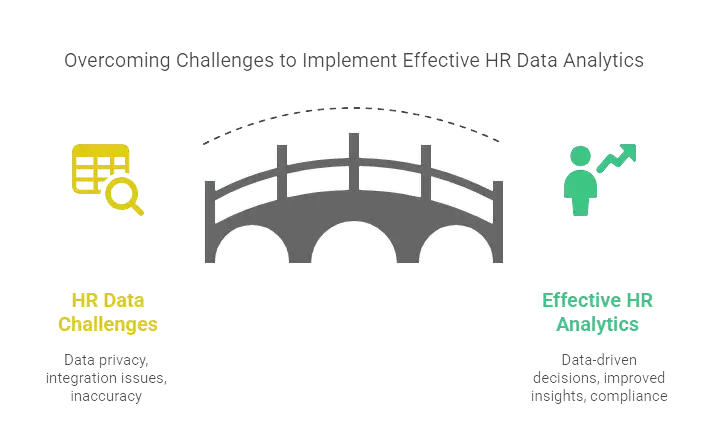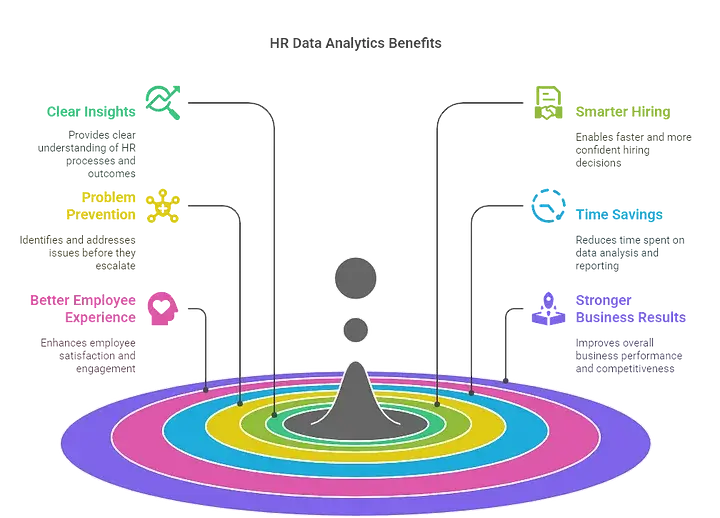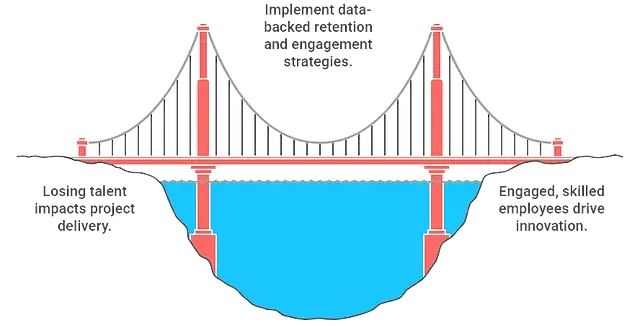Loading content...
- Software DevelopmentIT Consulting & DesignAI & Data SolutionsQuality AssuranceTeam & Resource SupportBusiness Support Services
Ever felt like you’re making important decisions based on gut feelings rather than solid facts? You’re not alone. HR data analytics empowers companies to make informed decisions using real employee data.
Data-backed strategies outperform intuition-based choices in HR planning.
Identifying flight-risk employees helps in proactive engagement.
Analytics streamline recruitment workflows and reduce time-to-hire.
Loading content...
Let's discuss your project and create a custom web application that drives your business forward. Get started with a free consultation today.

Ever felt like you're making important decisions based on gut feelings rather than solid facts? You're not alone. In the fast-paced world of IT, where talent is everything, relying on instincts just isn't enough anymore. Teams are growing, projects are moving faster, and expectations from leadership are sky-high — but without the right insights, even the best HR strategies can fall flat.
That's where people analytics steps in. It's not just another trendy buzzword; it's the secret weapon smart IT companies are using to turn complex workforce data into clear, actionable strategies. From hiring the right talent to predicting turnover before it happens, HR data analytics is changing the game — and those who embrace it are leading the pack.
In this blog, we'll dive into how IT companies use people analytics to make better, faster, and more confident decisions — and why mastering it is no longer optional for HR leaders.
HR data analytics, also known as people analytics, is the process of collecting, analyzing, and interpreting HR-related data to enhance decision-making. It provides valuable insights into key areas like employee performance, hiring efficiency, attrition rates, engagement levels, and workforce planning. With the right analytics in place, companies can move from reactive HR practices to proactive, data-driven strategies.


IT companies, which often employ large workforces with diverse skill sets, rely on HR analytics for various purposes:
Recruitment in IT is highly competitive, and companies need data-driven strategies to attract and retain top talent. HR analytics helps by:
IT companies use analytics to monitor employee performance through key metrics such as:
Attrition is a major concern in the IT sector. People analytics helps predict employees who may leave based on:
Engaged employees are more productive and loyal. Analytics tools help track employee sentiment through:
HR analytics enables IT firms to forecast workforce needs by analyzing trends in:

While people analytics offers numerous benefits, IT companies face certain challenges:

HR data analytics is revolutionizing decision-making in IT companies, helping them hire smarter, retain top talent, and enhance employee productivity. As technology evolves, integrating AI and machine learning into HR analytics will further refine workforce management strategies. Companies that embrace data-driven HR practices will gain a competitive edge in attracting, developing, and retaining IT professionals.